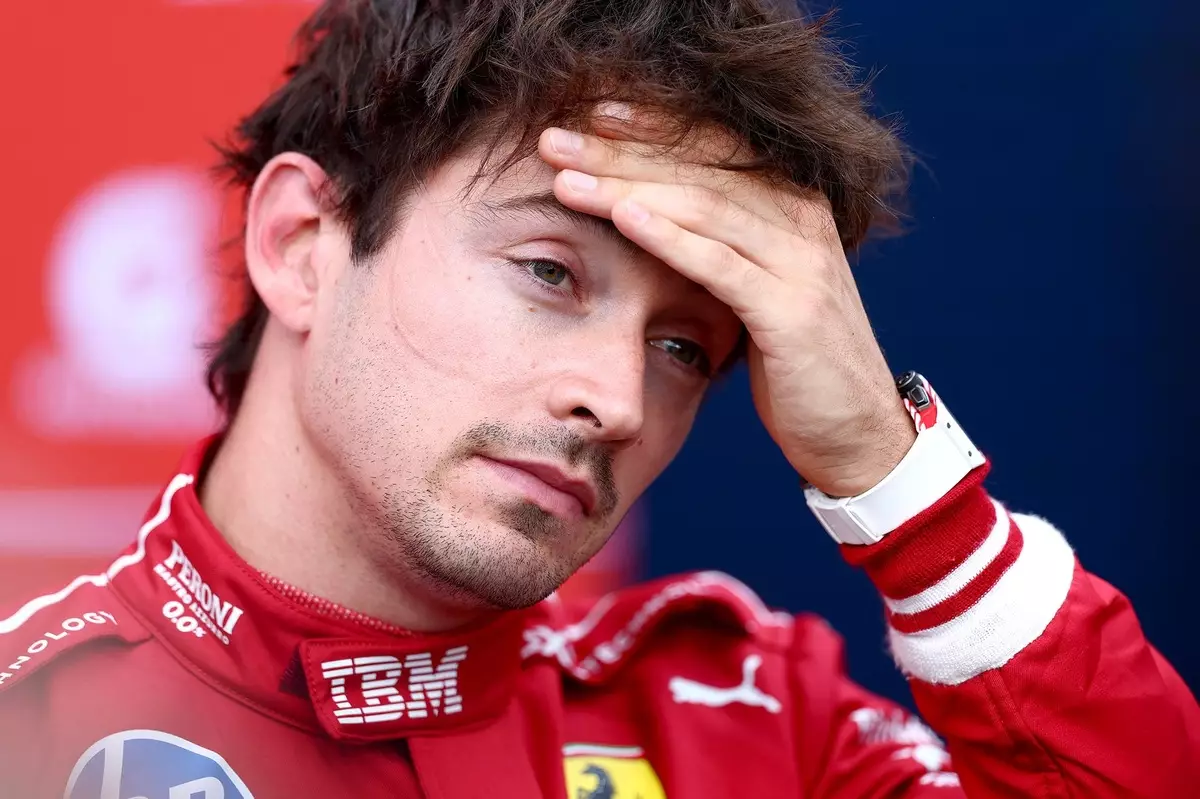Ferrari’s recent performances underscore a painful truth that resonates across the realm of Formula 1—advancements alone rarely guarantee a breakthrough. Despite enacting a raft of upgrades in recent races, the Italian team continues to grapple with an elusive sense of competitiveness, highlighted vividly during the Belgian Grand Prix weekend. Charles Leclerc’s sprint race performance reveals a familiar pattern: a promising start quickly overshadowed by technical and strategic shortcomings, ultimately culminating in a disheartening backslide in the race standings.
Leclerc, who launched from fourth on the grid, executed a textbook first-lap move that exhibited his raw talent and aggressive racing pedigree. Pulling alongside Lando Norris on Kemmel Straight and overtaking into Les Combes exemplifies the skill that fuels fan admiration. Yet, the joy of such a maneuver is short-lived in the context of Ferrari’s ongoing struggles. Norris’s McLaren, maintaining a pace advantage, soon overtook Leclerc at Les Combes, setting the stage for the race’s internal narrative—Ferrari, with all its resources and history, remains hostage to an unwieldy car that fails to sustain its initial promise.
By the race’s end, Leclerc’s deficit of ten seconds behind the winner encapsulates the gulf that remains between Ferrari and the leading contenders. His post-race comments reflect a cautious acknowledgment: while there’s “learning to take away,” the team’s current capabilities hardly suggest a leap forward. The persistent gap signals a deeper issue—one rooted not merely in setup or driver performance but embedded in the fundamental design and balance of the SF-25.
The Myth of Mechanical Upgrades and Their Hollow Promise
Ferrari’s ongoing development process revolves around a series of carefully curated mechanical upgrades, from a comprehensive underfloor overhaul to advanced rear suspension geometry. The magnitude of these modifications, detailed and extensive, seemed promising on paper. Yet, the tangible results have been disappointingly modest. The upgrades, including a low-drag rear wing tailored to Spa’s circuit, have failed to translate into a commanding increase in pace or consistency.
This disconnect between engineering effort and on-track reality raises critical questions about the efficacy of current F1 development strategies. Are teams placing too much emphasis on technological innovations that promise gains on paper but falter under real-world conditions? Ferrari’s experience suggests that engineering brilliance cannot compensate for fundamental shortcomings in aerodynamic efficiency, chassis balance, or power unit performance. The upgrades have been, at best, incremental frustrations rather than game-changers.
This is an important lesson for the sport: in an era where marginal gains are hailed as breakthroughs, the true power lies in the foundational car package—something Ferrari seems to be struggling to perfect. The fact that drivers like Lewis Hamilton can still overtake in a race with limited overtaking opportunities confirms that a car’s intrinsic pace and handling are paramount, and upgrade packages alone often cannot fix underlying issues.
The Role of Communication and Strategic Clarity in a Turbulent Season
One of the more intriguing aspects of the Belgian GP weekend is the disparity in team communication and the muddled messaging surrounding upgrades. Hamilton’s comment about recent upgrades and their effects hints at a deeper confusion within the garage. His remark about a rear-axle lock-up in practice and the lack of official declaration of certain modifications point to the often opaque nature of F1’s technical regulation and team dynamics.
Hamilton’s confusion underscores a broader issue: in such a high-stakes environment, clarity in development and transparency with the media can impact perceptions, sponsor relationships, and even driver morale. When drivers and engineers are not aligned on what constitutes a true upgrade, it breeds uncertainty, hampers effective feedback, and ultimately stifles the ability to adapt swiftly.
Ferrari’s situation exemplifies how rapid development cycles require meticulous communication. Without clear, cohesive strategies, even the most advanced technical packages risk falling into the trap of being perceived as mere window dressing rather than genuine progress. A team must synchronize its technological ambitions with strategic execution—a lesson Ferrari must heed if it hopes to carve out a more competitive future.
The Coming Storm: Will Innovation Save Ferrari or Further Entrench Its Struggles?
Looking ahead, one must ask whether Ferrari’s focus on sophisticated aerodynamic modifications and parts upgrades will eventually unlock its potential or continue to serve as a facade for deeper issues. The current season reveals that genuine progress in F1 demands more than isolated technical tweaks; it’s about holistic improvement—ensuring every element of the car works in concert.
Ferrari’s challenge is not unique but underscores a fundamental reality: in Formula 1, raw innovation must be paired with strategic precision, driver development, and impeccable execution. If the team continues to rely on incremental upgrades without addressing core deficits—be they in the power unit, chassis dynamics, or operational adaptability—then victory will remain tantalizingly out of reach.
Ferrari’s ongoing quest for supremacy underscores an overarching truth of contemporary motorsport: innovation without a clear, cohesive strategy is just noise. To genuinely close the gap to top teams like Red Bull and McLaren, Ferrari must revisit its foundational principles, fostering a culture of relentless refinement rather than superficial upgrades. Only through this approach can the Scuderia truly harness the transformative power of cutting-edge engineering and reclaim its place at the front of the grid.


Leave a Reply